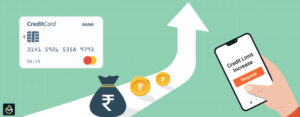For individuals grappling with existing credit card debt, the accumulation of interest can be a significant hurdle to becoming debt-free. High Annual Percentage Rates (APRs) can make it feel like you’re only paying off interest, with little progress on the principal. This is precisely where a specialized product like the Everyday Long Term Balance Transfer Credit Card can become an invaluable financial tool. Designed to offer a substantial period of 0% interest on transferred balances, it provides a crucial breathing room to consolidate debt, reduce monthly outgoings, and accelerate your path to financial freedom.
This comprehensive guide will delve into the critical features and benefits of the Everyday Long Term Balance Transfer Credit Card, explain its ideal user profile, and provide a clear, step-by-step process for applying for this important debt management solution.
Understanding the Everyday Long Term Balance Transfer Credit Card
The Everyday Long Term Balance Transfer Credit Card is a specific type of credit card primarily designed to help consumers manage and reduce their existing credit card debt. Its main appeal lies in its extended introductory period of 0% interest on balances transferred from other credit cards. This allows cardholders to make significant progress in paying down their principal debt without the burden of accruing interest charges, provided they make at least the minimum payments on time. While it may offer features for new purchases, its core purpose is debt consolidation and repayment.
Key Features and Benefits of the Everyday Long Term Balance Transfer Credit Card
The value of the Everyday Long Term Balance Transfer Credit Card comes from its specialized debt management features:
- Extended 0% APR on Balance Transfers: This is the cornerstone feature. The card offers a lengthy introductory period (e.g., 24, 30, or even more months) during which no interest is charged on balances transferred from other credit cards. This gives you a dedicated window to pay down your debt more effectively.
- Balance Transfer Fee: It’s crucial to understand that while the interest rate is 0%, a balance transfer fee typically applies. This is usually a percentage of the amount transferred (e.g., 1% to 3%). You should factor this fee into your calculations to ensure the savings from 0% interest outweigh this upfront cost. For example, transferring £5,000 with a 3% fee would cost £150, but if you’re saving much more in interest, it’s worthwhile.
- 0% APR on New Purchases (Often Shorter Period): Many balance transfer cards also offer an introductory 0% APR period on new purchases, though this period is generally shorter than the balance transfer period. While convenient, the primary goal of this card should be debt repayment, so caution with new spending is advised.
- No Annual Fee (Often): A significant number of long-term balance transfer cards come with no annual fee. This adds to the cost-effectiveness of the card, as you don’t incur ongoing charges while trying to pay down debt.
- Simplified Payments: Consolidating multiple credit card debts onto one card simplifies your monthly payments. Instead of tracking several due dates and minimums, you only have one.
- Potential to Improve Credit Score: By consolidating debt and consistently making on-time payments, you can positively impact your credit utilization ratio (by having one balance on a new card with a higher limit) and payment history, which are key factors in improving your credit score.
- Online Account Management & Mobile App: Reputable card issuers provide comprehensive online banking and mobile app access, allowing you to easily monitor your balance, track your 0% APR end date, make payments, and manage your account securely.
- Fraud Protection: As with all legitimate credit cards, robust fraud protection measures are in place to safeguard your account against unauthorized transactions.
Who is the Everyday Long Term Balance Transfer Credit Card For?
This type of credit card is specifically designed for, and most beneficial to, individuals who meet certain criteria:
- Have Existing Credit Card Debt: This is the primary requirement. If you’re paying high interest on balances across one or more credit cards, this card is a strong candidate.
- Committed to Paying Off Debt: The card provides the opportunity to pay off debt interest-free, but it requires discipline. You must be committed to making regular, consistent payments, ideally more than the minimum, to pay off the balance before the 0% APR period ends.
- Have a Good to Excellent Credit Score: To qualify for the longest 0% APR periods and the most favorable balance transfer fees, a good to excellent credit score is typically required. Lenders want to see a history of responsible credit management, even if you currently hold debt.
- Need Breathing Room from Interest: If high interest charges are making it difficult to reduce your principal debt, this card offers the vital space to accelerate your repayment.
- Seeking Financial Simplification: Consolidating multiple debts into one payment can reduce stress and make financial tracking much easier.
- Can Avoid New Spending: Ideally, you should avoid using the balance transfer card for new purchases, or at least pay off any new purchases in full each month, to ensure all your payments go towards the transferred balance. Running up new debt defeats the purpose.
Important Considerations Before Applying
Before applying for an Everyday Long Term Balance Transfer Credit Card, keep these critical points in mind:
- The 0% APR is Not Forever: This is the most crucial point. The interest-free period will end. Mark the end date on your calendar and know exactly how much you need to pay each month to clear the balance before that date. If you don’t, the remaining balance will be subject to the standard, often high, purchase APR.
- Balance Transfer Fee: Always confirm the balance transfer fee. Factor it into your cost-benefit analysis.
- New Purchases vs. Balance Transfers: Understand that the 0% APR period for new purchases might be shorter, or non-existent, and new purchases will usually be subject to interest if the transferred balance isn’t paid off first (due to payment allocation rules). It’s best to avoid new spending on this card if possible.
- Credit Limit: The credit limit you are approved for must be sufficient to cover the balance you wish to transfer. If your existing debt exceeds the new card’s limit, you won’t be able to transfer all of it.
- Transfer Restrictions: You usually cannot transfer a balance from another credit card issued by the same bank. For example, if you’re applying for a Barclaycard Balance Transfer Card, you cannot transfer debt from an existing Barclaycard.
- Impact on Credit Score: While positive if managed well, applying for new credit involves a “hard search” on your credit file, which can temporarily ding your score. Multiple applications in a short period can also be detrimental.
- Minimum Payments Still Required: Even at 0% APR, you must make at least the minimum payment on time every month. Missing payments will not only incur fees but also revoke your 0% APR offer and severely damage your credit score.
How to Apply for an Everyday Long Term Balance Transfer Credit Card
The application process is typically online and straightforward. While “Barclaycard Everyday Long Term Balance Transfer Credit Card” is a descriptive term rather than a specific product name, most major banks in the UK (like Barclaycard, Santander, NatWest, MBNA, Virgin Money, etc.) offer such cards. The steps below apply generally.
- Research and Compare Offers: Start by using reputable financial comparison websites (e.g., MoneySavingExpert, Compare the Market, Confused.com) or checking directly on bank websites (like Barclaycard.co.uk, Santander.co.uk) to find the best current “long term balance transfer” offers. Look for the longest 0% APR period and the lowest balance transfer fee.
- Check Eligibility (Soft Search): Most providers offer an eligibility checker tool that performs a “soft search” on your credit file. This is highly recommended as it indicates your likelihood of approval without affecting your credit score. This helps you avoid applying for cards you won’t get.
- Navigate to the Application Page: Once you’ve identified a suitable card and confirmed your eligibility, click the “Apply Now” or similar button on the official bank’s website.
- Complete the Online Application Form: You will need to provide various pieces of personal and financial information. Be prepared with:
- Personal Information: Full legal name, date of birth, current and previous addresses (typically for the last 3-5 years), contact number, and email address.
- Financial Information: Employment status, annual gross income, details of your employer, and your monthly outgoings (e.g., rent/mortgage, other loan/credit card repayments).
- Details of Debt to Transfer: You’ll need the names of the banks/providers, account numbers, and the approximate balances you wish to transfer.
- Bank Account Details: For setting up direct debits for future payments.
- Review and Consent: Carefully review all the information you have entered for accuracy. Read and understand the credit agreement, terms and conditions, and the bank’s privacy policy. Pay close attention to the standard APR after the 0% period, any fees, and the consequences of missed payments.
- Submit Your Application: After confirming everything is correct and you agree to the terms, submit your application.
- Decision and Next Steps:
- Instant Decision: Many applicants receive an instant decision. If approved, you’ll receive confirmation.
- Further Review: If your application requires further review, the bank may contact you for additional information or documents.
- Declined: If declined, the bank will usually provide a reason or you can request one.
- Initiate Balance Transfer: Once approved and you receive your card, you’ll typically need to activate it first. Then, you can usually initiate the balance transfer(s) through your online banking account, mobile app, or by calling customer service. Make sure to do this well before your current card’s payment due date to avoid interest charges on those old cards.
- Confirm Transfer and Continue Payments: It can take a few days for the balance transfer to complete. Continue making minimum payments on your old credit card(s) until you confirm the transfer has gone through and the balance on the old card is zero.
Conclusion
The Everyday Long Term Balance Transfer Credit Card is a highly effective tool for individuals committed to tackling credit card debt. By offering a significant interest-free period, it provides a valuable opportunity to make tangible progress on your principal balance and simplify your financial life. However, its success hinges on disciplined use: making consistent, on-time payments, ideally paying more than the minimum, and avoiding new spending to truly leverage its power as a debt management solution. Used wisely, it can be a pivotal step towards achieving financial freedom.







